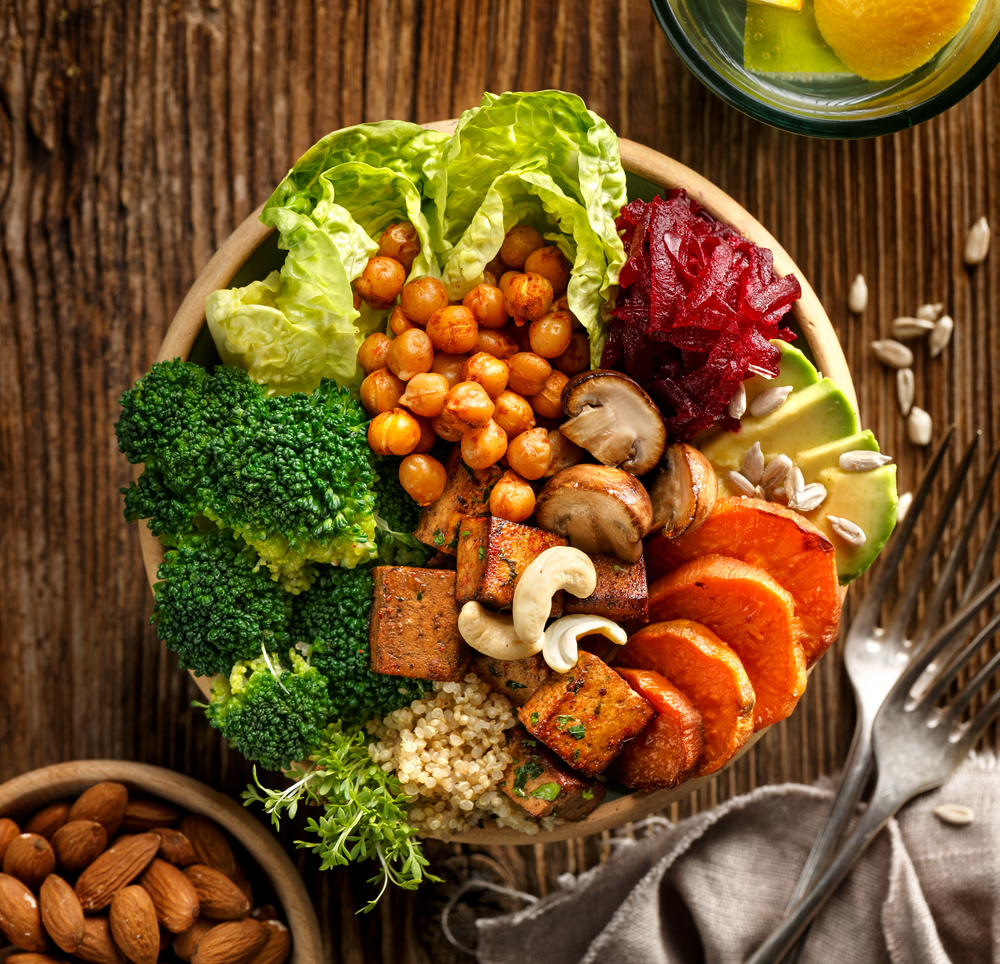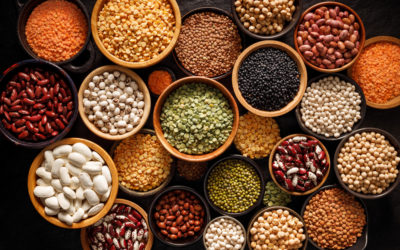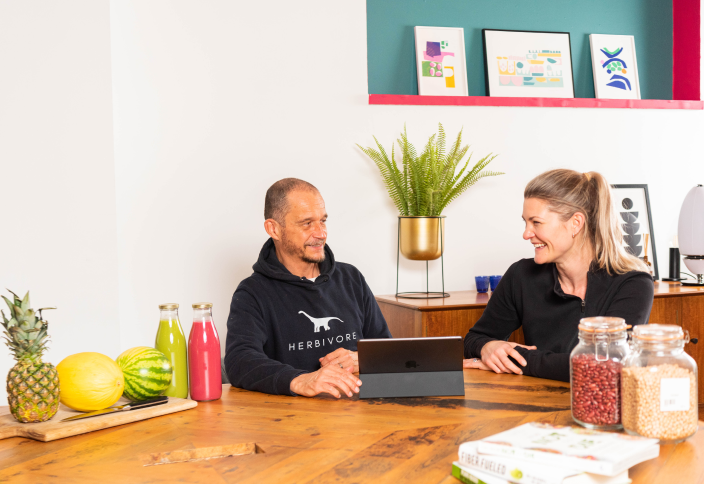January means Veganuary
It’s Veganuary! The annual celebration of all things plant-based eating is upon us and thousands of people across the UK will be thinking about cutting out the meat and dairy for a month. They may be wondering what to expect; if their diet will become boring or if they might be deficient in one nutrient or another. That’s certainly a commonly held belief, and it is possible, but with some planning and a willingness to try a wide variety of plant foods these myths about plant-based eating can be busted wide open. To help everyone along on their Veganuary journey, and to set their minds at ease, I have answered the most common questions on the subject.
Is a vegan diet going to be too boring?
How many varieties of edible plant food can be found on earth? Have a guess. I’ll leave the answer right at the bottom of the page.
There’s no doubt that, by not leaving any foods off our shopping lists, we will have more variety. But what happens if we leave out meat, fish, and dairy? Are there enough foods left to satisfy our desire for different meals and snacks on each day of the week?
The Hadza are a tribe of hunter gatherers in Tanzania. Over the course of a whole year they will include 600 different plant foods in their diet. That compares to around 50 varieties for the average American; and the Hadza don’t even have a Tesco which ships-in fruits and vegetables from all over the world for them to choose from!
So let’s have a think about a trip to those supermarkets. The first aisles we happen upon are the fresh fruit and vegetable aisles. Now, ask yourself honestly, is there enough variety there? Are 8 different types of apple enough? How many of the 10 different varieties of potato will you get through before you get bored with them? Have you tried butternut squash yet? What’s a dragon fruit?
The choice is plentiful and that’s before we head into the canned fruit and vegetable section to check out 55 or so different types of soup, the chopped tomatoes (with or without herbs or chillies) to make a pasta sauce, the water chestnuts that add a crunch to Asian-style noodles. If there’s any room left in the trolley when we get to the freezer section we can pick up some convenient semi-processed vegetables like chips or potato waffles. There are frozen berries for a quick and easy smoothie.
I’m sure you get my point – the variety of plant foods is there for us. We just need to try and expand our repertoire of dishes. I’ve found that recipe searches on YouTube yield all the information that I need to get me started on trying out something new. So, tap “vegan” or ‘plant-based” into the search bar along with the names of your favourite meals and pick an easy recipe to follow.
Before reading on, please take a moment to check out my Plant-powered Diet Transformation course. This course has been designed to help people to shift to a more healthful, plant-based diet in an interesting, practical, and individually supported way.
All of the details can be found in the healthy eating section – https://thecompletehealthcoach.org.uk/healthy-eating/
Where do you get your protein from?

As well as being the most oft-asked question of people who follow a plant-based or vegan diet, it’s also the one that irritates them the most! Why? Well, there are two common misconceptions about dietary protein. Firstly, the food industry would have us believe that we all need to eat more protein and they are adding protein to all sorts of products and passing them off as health foods (protein-enriched Mars Bar, anyone?). The truth of the matter is that most people eat more than the required amount of protein every day. In the UK the daily reference nutrient intake for protein is 0.75g per kg of body weight, which works out as 56g/day and 45g/day for men and women of average build, respectively. The actual average daily intake of dietary protein is 88g for men and 64g for women. The UK population is not protein deficient.
The second misconception is that plant foods themselves don’t contain enough protein when compared to meat and dairy. While it’s true that meat, fish, eggs, and dairy products are higher in protein concentration than plant foods, plants do contain protein (where do you think cows get their protein from?), but they don’t have the high levels of saturated fats and cholesterol found in meat and dairy. That makes them a much healthier choice. Here are some of the most protein-dense examples of whole plant foods:
| Tempeh Lentils Edamame (soybeans) Black beans | Kidney beans Tofu Chickpeas Peas | Hemp seeds Peanut butter Quinoa Potatoes | Almonds Rolled oats Broccoli Kale |
We can therefore meet all of our protein needs by eating plants, but there is one more thing to bear in mind – we should eat a wide variety of them. This is because protein is made from different combinations of amino acids, some of which can be produced in the body and some which can’t and have to be sourced from our diet. The ones which we have to get from our food are known as essential amino acids and there are 9 of them. Different plants contain different proportions of essential amino acids. To make sure that we are eating enough all 9 across the week we need to eat lots of different vegetables, grains, legumes, nuts, and seeds.
Do you have to eat dairy to get enough calcium?
Let’s start by clearing up why calcium is so important for healthy living. Calcium is a mineral most often associated with healthy bones and teeth, although it also plays an important role in blood clotting, helping muscles to contract, and regulating normal heart rhythms and nerve functions. About 99% of the body’s calcium is stored in bones, and the remaining 1% is found in blood, muscle, and other tissues.
The UK reference nutrient intake for calcium is 700mg per day for adult men and women. On average men in the UK consume 1,007mg and women 777mg. As this is an average, some adults will consume more than they need and others will be deficient.
The body gets the calcium it needs in two ways. One is by eating foods or supplements that contain calcium, and the other is by drawing from calcium in the body. If one doesn’t eat enough calcium-containing foods, the body will remove calcium from bones. Ideally, the calcium that is “borrowed” from the bones will be replaced at a later point. But this doesn’t always happen, and can’t always be accomplished just by eating more calcium. The other, less well understood, factor that influences our bone mineral density is that of weight-bearing exercise, which leads to increased calcium absorption and is another important reason why we should be physically active.
While it is true that dairy foods like cow’s milk contain substantial amounts of calcium, it isn’t necessarily all absorbed when we eat or drink it. In fact, only about 33% of the calcium in cow’s milk is absorbed by the body. This is known as the bioavailability score and is a more effective measure of how calcium-rich a food is. The other issue with dairy food that we should bear in mind is that it almost always comes packaged with unhealthy saturated fats, cholesterol, and high levels of hormones, which should be avoided in a healthy diet. That’s why drinking cow’s milk for the calcium has been likened to smoking cigarettes for the oxygen; the oxygen is in there, but do you really want to take in all of that tar and carbon monoxide at the same time?
The good news is that we can get all of the calcium that we need by eating healthful plants. Some plants have more bioavailable calcium than others. Here are some of the most calcium-rich plant foods:
| Tofu Green leafy veg Chickpeas | Almonds Pumpkin seeds Oranges | Chia seeds Tomatoes Kale | Soy or oat milk Butter beans |
How many varieties of edible plants are there on Earth?
What was your guess? 1,000? 10,000?
There are 400,000 varieties of plants on Earth, but 100,000 of them are not edible. That leaves ONLY 300,000 for us to choose from!
Best wishes on your Veganuary journey!





